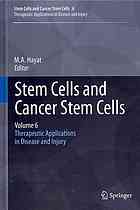

Most ebook files are in PDF format, so you can easily read them using various software such as Foxit Reader or directly on the Google Chrome browser.
Some ebook files are released by publishers in other formats such as .awz, .mobi, .epub, .fb2, etc. You may need to install specific software to read these formats on mobile/PC, such as Calibre.
Please read the tutorial at this link: https://ebookbell.com/faq
We offer FREE conversion to the popular formats you request; however, this may take some time. Therefore, right after payment, please email us, and we will try to provide the service as quickly as possible.
For some exceptional file formats or broken links (if any), please refrain from opening any disputes. Instead, email us first, and we will try to assist within a maximum of 6 hours.
EbookBell Team

4.0
36 reviewsThe difference among pluripotent stem cells, multipotent stem cells, and unipotent stem cells is pointed out. Vast therapeutic applications of the following specific stem cells in disease and tissue injury are discussed: human embryonic stem cells, human mesenchymal stem cells, germ cell-derived pluripotent stem cells, induced pluripotent stem cells, human umbilical cord blood-derived stem cells, breast tumor stem cells,and hematopoietic stem cells. Because of the potential of human embryonic stem cells to produce unlimited quantities of any human cell type, considerable focus is placed on their therapeutic potential. Because of their pluripotency, these cells have been used in various applications such as tissue engineering, regenerative medicine, pharmacological and toxicological studies, and fundamental studies of cell differentiation. The formation of embryoid bodies, which are three-dimensional aggregates of embryonic stem cells, is explained as this is the first step in cell differentiation. Such embryoid body culture has been widely used as a trigger for the in vitro differentiation of embryonic stem cells. The basic capacity of self-renewal of human embryogenic stem cells is explained. The role of TGF-beta in the propagation of human embryonic stem cells is discussed. The differentiation of human embryonic stem cells into neurons, hepatocytes, cardiomyocytes, and retinal cells is fully explained. Donor policies for hematopoietic stem cells are also explained.